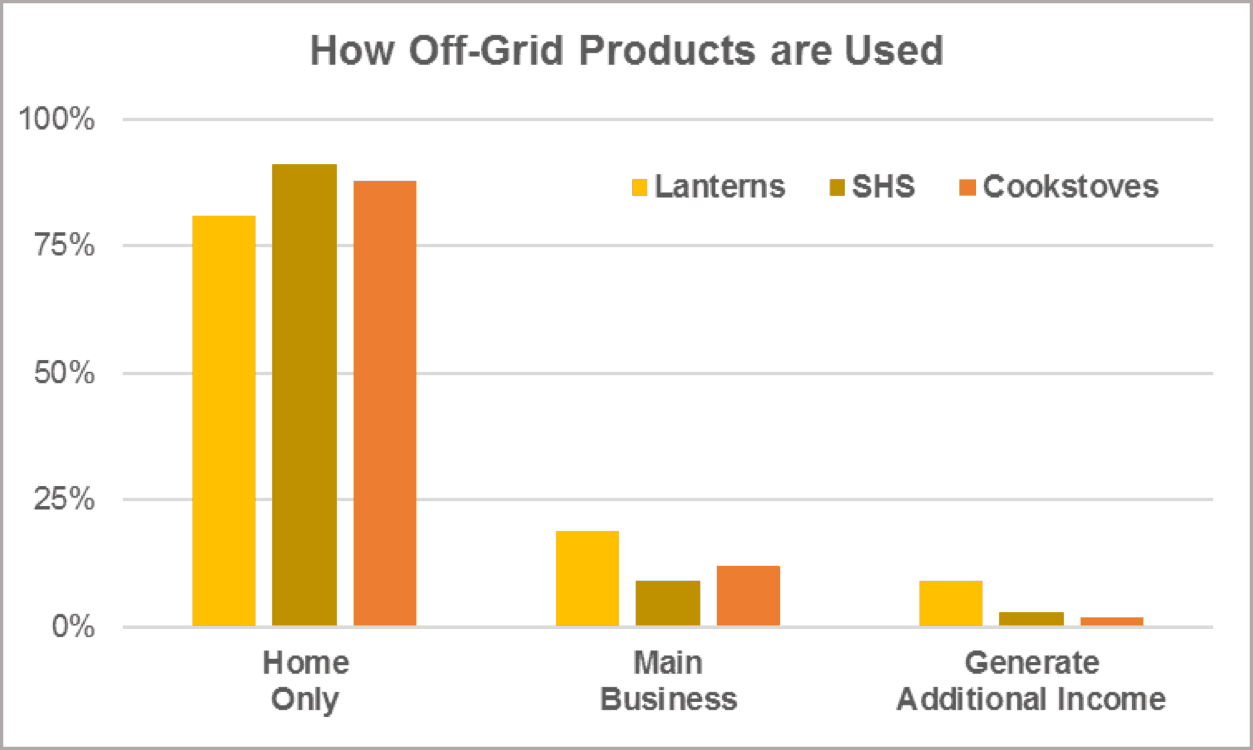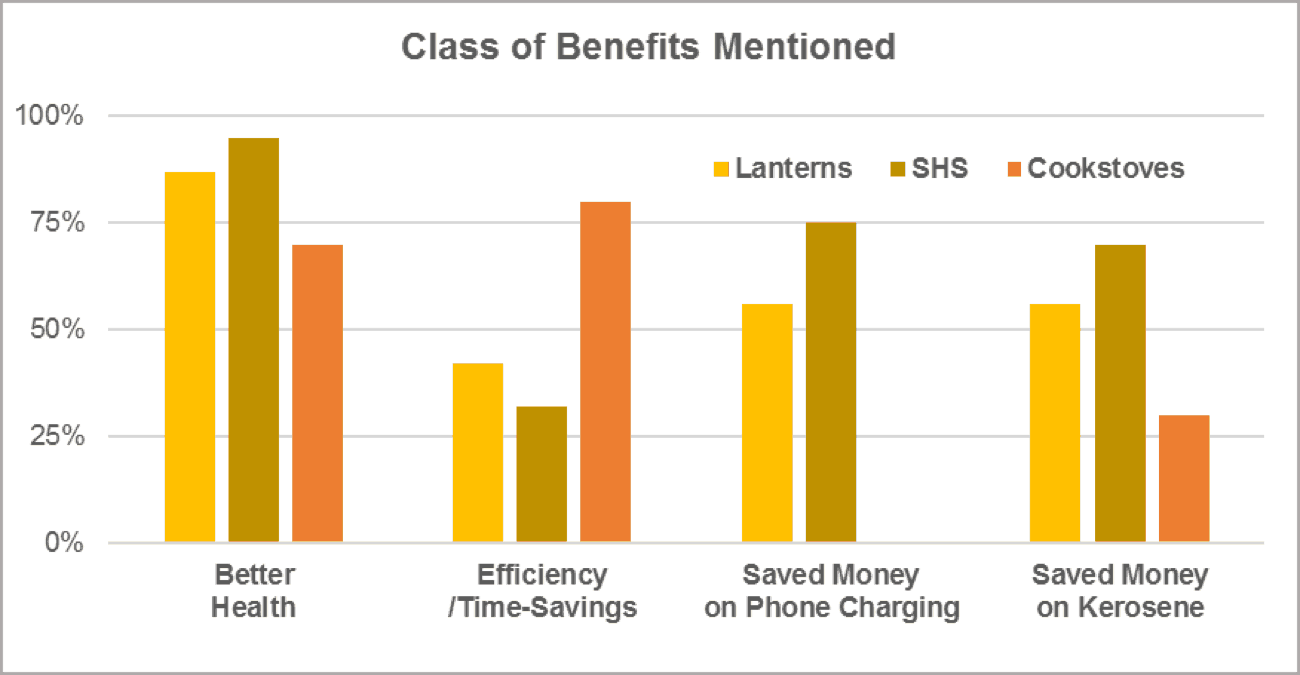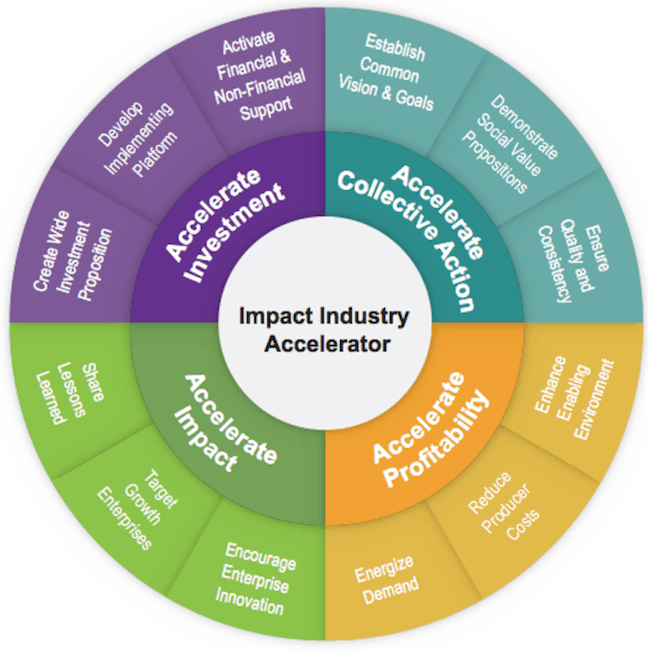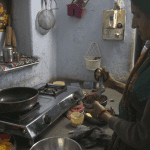Why Health Benefits Could Drive Customer Value for Solar Lighting and Clean Cookstoves
Solar energy is booming in sub-Saharan Africa and for good reason. By 2030, the region will be home to 90 percent of the world’s off-grid population, or 600 million out of 674 million people. In just the last few years, investors have poured over $500 million into the sector. On the ground, innovative financing and distribution models, such as PAYGo and FINCA International’s BrightLife, are carrying these solutions down the last mile to remote communities.
But this excitement should not blind us to the challenges that solar and other off-grid products face as they strive for market-level scale. Research suggests consumers are extremely price sensitive and they have a low willingness to pay for solar products, even the most inexpensive ones. This demand-side weakness may also be showing up in sales data, which indicates that market growth for off-grid lighting has slowed down noticeably in the last two years. Meanwhile, the obstacles that prevent improved cookstoves from reaching scale are proving hard to overcome.
Mapping Customer Perceptions
Our research at FINCA International is designed to map customer perceptions, starting with how they are using our products, along with the benefits and obstacles they experience. This approach adopts the customers’ perspective, describing the world as they see it. Other socially-responsible investors are also using customer research to measure their impact and to connect directly with end-users.
In Uganda, we surveyed BrightLife customers who purchased solar lanterns, solar home systems (SHS) and improved cookstoves in the preceding three years. We started with focus groups, asking customers to describe their experience using the products, both positive and negative. We then administered a questionnaire to measure the frequency of these observations among almost 800 customers, with a final round of 70 in-depth interviews to frame our analysis.
Use Cases and Perceived Benefits of Off-Grid Products
We found that customers are primarily using their solar lighting and cookstoves to improve the cleanliness and efficiency of their household. Productive use, such as running small shops, is a very distant second, with customers only using these products in business after the needs at home have been met. Smaller, portable lanterns are more likely to be used in income-generation, but domestic use clearly takes precedence for all three products.

Of all the types of benefits, health stands out as the most frequent and impactful category, especially for solar products. Health is also a strong category for cookstoves, though it is less prominent than efficiency/time-savings, as shown in the chart below.

Health-related perceptions cover a wide range of improvements, including fewer eye problems and burns, and less poisoning from smoke and fumes. Customers were vivid in describing their experiences, such as the feeling of pain that is “like having small stones in your eyes,” constant coughing, or the anxiety of having mosquito nets exposed to open flames. They also cited perceptions that are not discussed in academic literature: Households with monthly incomes of at least $84 mentioned sleeping better at night and cleaner bedding (and walls), while the poorest rural customers—those with incomes below $25 per month—were more likely to mention deterrence of rats and pests.
In addition to health, cookstove users cited efficiency benefits, such as faster food preparation. They also experienced problems, however, such as the need to procure small, dry pieces of wood, otherwise the stove would produce excessive smoke. While such problems inhibit the adoption of these cookstoves, our customers described some compelling benefits that could make the effort worthwhile.
Interestingly, less than half of solar customers observed changes in their day-to-day routine as a result of lengthening the day. Meanwhile, the cash savings on traditional fuels (e.g., kerosene or firewood) are offset against the costs of the product itself. Such considerations are not at the forefront of customers’ minds, however. They value these off-grid products mostly for the better quality of light they offer and for their contribution to a clean and healthy household.
Fostering a Consumer-Driven Market
Sales and profitability may be the ultimate test of a product’s value, but they can be unreliable when the product is new and customers are still discovering its uses. Rigorous consumer surveys cannot replace experimental evidence for measuring impact, but they have an important role to play in centering our attention on the customer experience. From this perspective, we believe that emphasizing the health and cleanliness of solar lighting is more likely to drive uptake and usage than focusing on convenience alone. But studying user perceptions does more than help us sell off-grid products—it gives customers a voice in shaping the market and ensuring that products deliver practical benefits.
Are you interested in learning more? Click here to read an executive summary of the study and the full-length white paper.
Scott Graham is Director of Customer Research and Field Data Services at FINCA International.
Anahit Tevosyan is Associate Director, Research and Client Impact at FINCA International.
Photo credit: FINCA International / Alison Wright
Homepage photo credit: USAID
- Categories
- Energy, Environment



